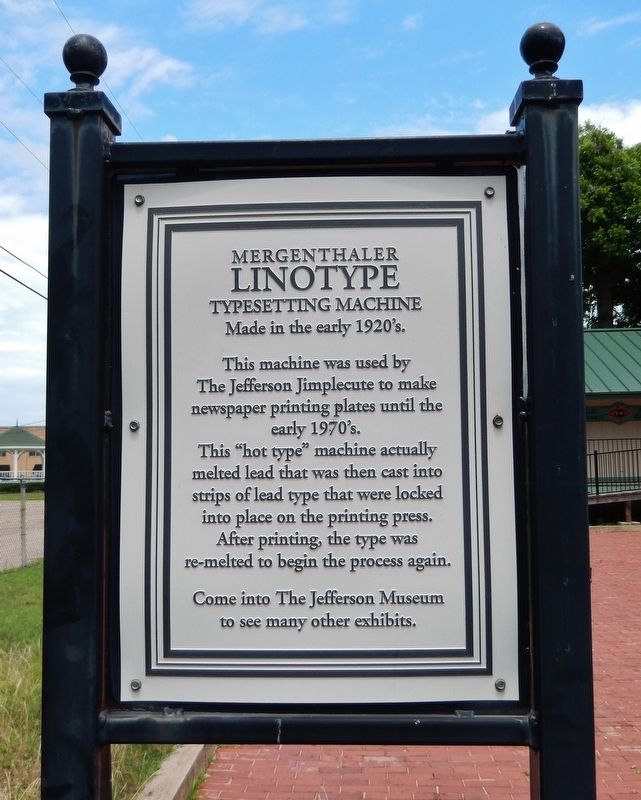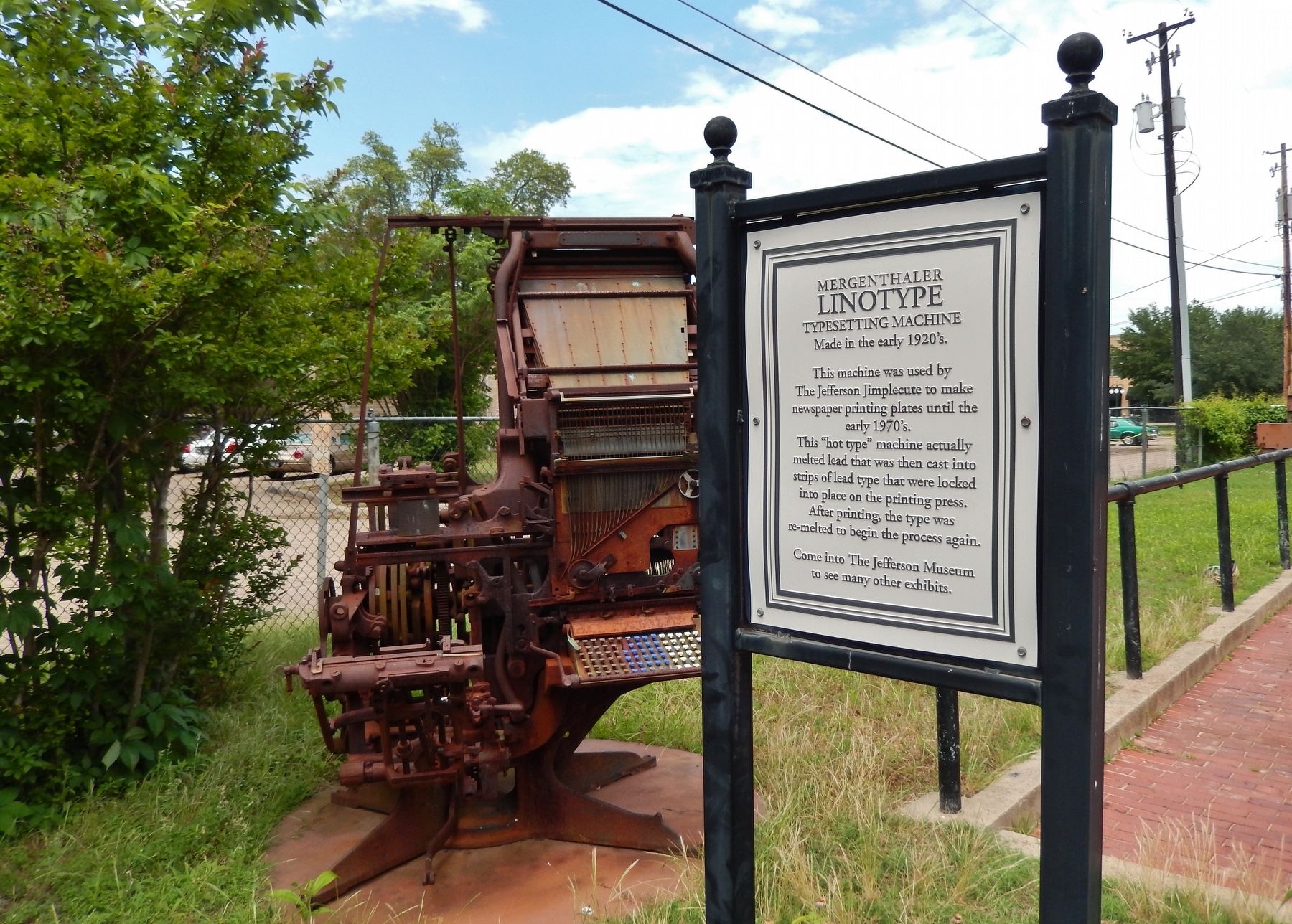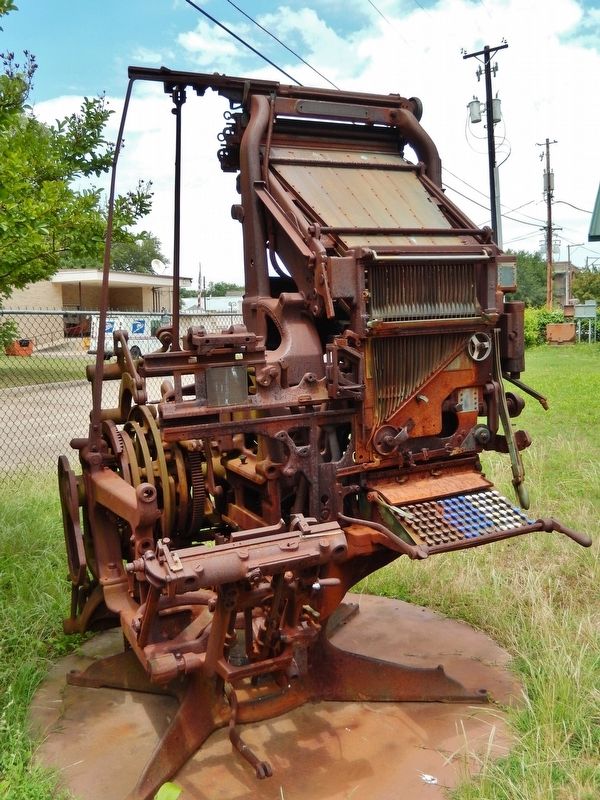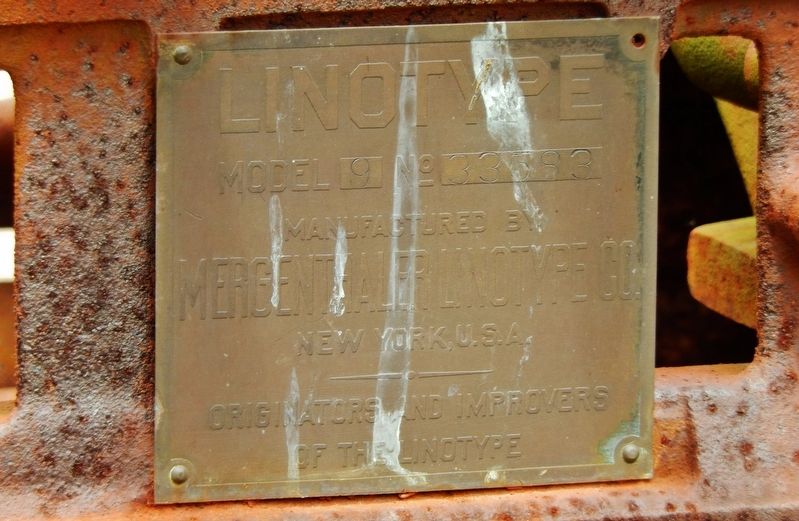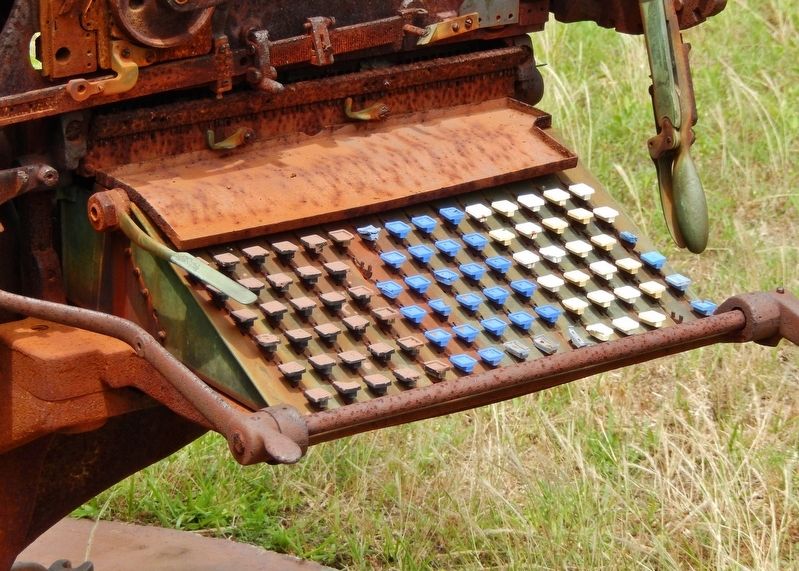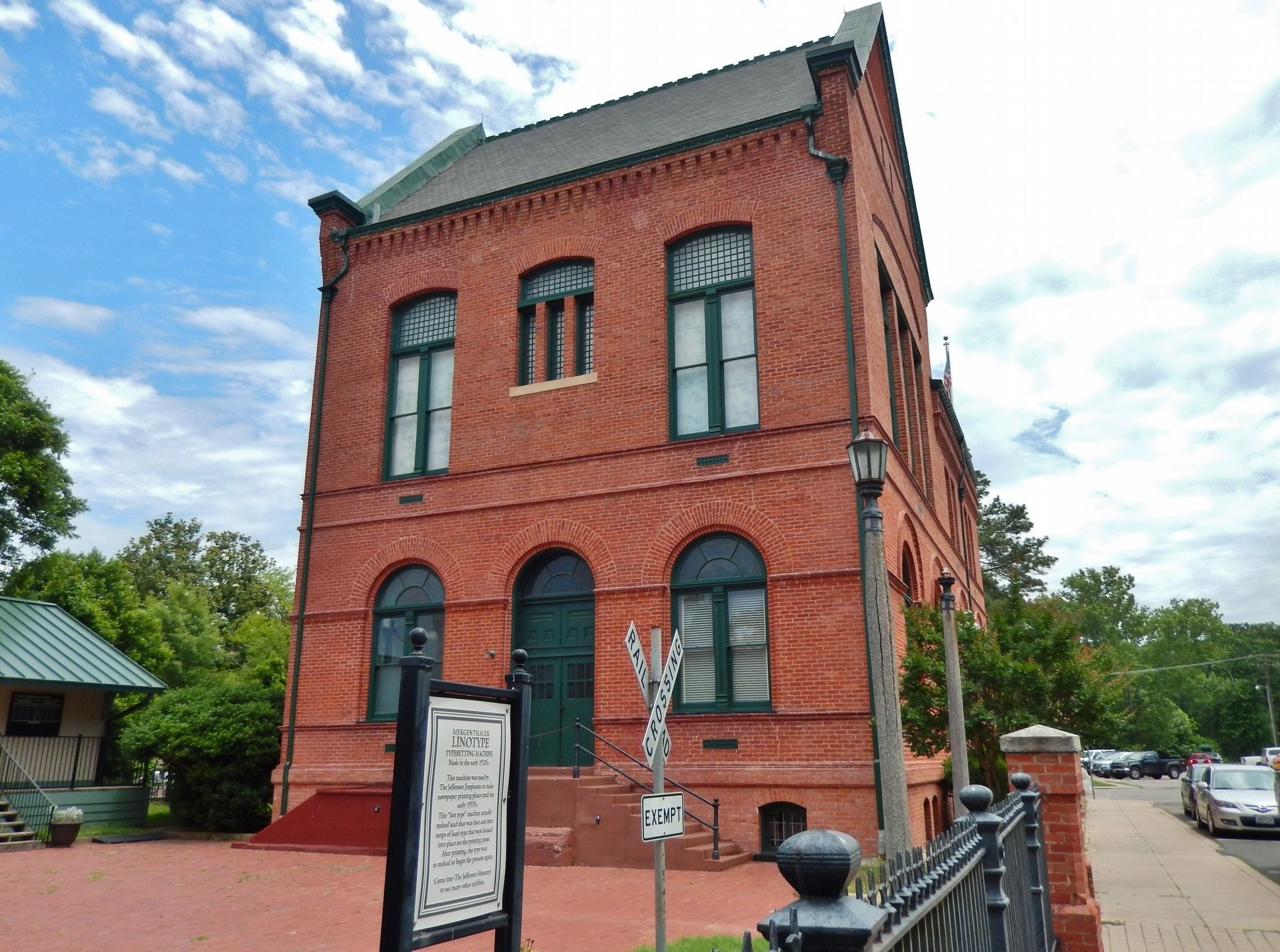Jefferson in Marion County, Texas — The American South (West South Central)
Mergenthaler Linotype Typesetting Machine
Made in the early 1920’s
Come into The Jefferson Museum to see many other exhibits.
Erected by The Jefferson Museum.
Topics. This historical marker is listed in these topic lists: Communications • Industry & Commerce.
Location. 32° 45.349′ N, 94° 20.783′ W. Marker is in Jefferson, Texas, in Marion County. Marker is at the intersection of North Market Street and West Bateman Alley, on the right when traveling north on North Market Street. Marker is located outside the Jefferson Museum, beside the subject machine, at the northwest corner of the property. Touch for map. Marker is at or near this postal address: 223 West Austin Street, Jefferson TX 75657, United States of America. Touch for directions.
Other nearby markers. At least 8 other markers are within walking distance of this marker. Brown-Bender House (within shouting distance of this marker); Old Federal Court and Post Office Building (within shouting distance of this marker); Sterne Fountain (within shouting distance of this marker); Stuart Hamblen (within shouting distance of this marker); Captain William Perry (within shouting distance of this marker); Excelsior House (about 300 feet away, measured in a direct line); First Texas Artificial Gas Plant (about 300 feet away); Jefferson Public Library (about 300 feet away). Touch for a list and map of all markers in Jefferson.
Also see . . .
1. Ottmar Mergenthaler and the Linotype.
Although Ottmar Mergenthaler was born in Hatchel, Germany in 1854 and received his early training as a watchmaker in Württemberg, his creative career started and flourished after he arrived in Washington, D.C. in 1872 at the age of eighteen. Mergenthaler’s concept was to produce a machine that did not merely set previously cast type, as the other machines did, but to combine the casting of type with the composition of text in a single operation. By July, 1884 two new machines on this principle were completed. In his own words, “Smoothly and silently the matrices slid into their places, were clamped and aligned, the pump discharged its contents, a finished Linotype, shining like silver, dropped from the machine and the matrices returned to their normal positions.”
(Submitted on December 5, 2017, by Cosmos Mariner of Cape Canaveral, Florida.)
2. The Invention of the Linotype Machine.
Perhaps one of the most notable inventions in the United States print world is the Linotype machine, developed in 1884 by a German watchmaker named Ottmar Mergenthaler. This machine drastically sped up the printing process and helped revolutionize the newspaper industry by its innovative technique of “line casting,” which placed entire lines of type for printing, rather than just individual letter typesetting. The name is a derivation from its full name, “Line of Type,” which is a literal description of the machine, itself. (Submitted on December 5, 2017, by Cosmos Mariner of Cape Canaveral, Florida.)
3. Linotype typesetting machine. by which characters are cast in type metal as a complete line rather than as individual characters as on the Monotype typesetting machine. It was patented in the United States in 1884 by Ottmar Mergenthaler. Linotype, which has now largely been supplanted by photocomposition, was most often used when large amounts of straight text matter were to be set. (Submitted on December 5, 2017, by Cosmos Mariner of Cape Canaveral, Florida.)
Credits. This page was last revised on August 27, 2020. It was originally submitted on December 4, 2017, by Cosmos Mariner of Cape Canaveral, Florida. This page has been viewed 368 times since then and 24 times this year. Photos: 1. submitted on December 4, 2017, by Cosmos Mariner of Cape Canaveral, Florida. 2, 3, 4, 5, 6. submitted on December 5, 2017, by Cosmos Mariner of Cape Canaveral, Florida. • Bernard Fisher was the editor who published this page.
